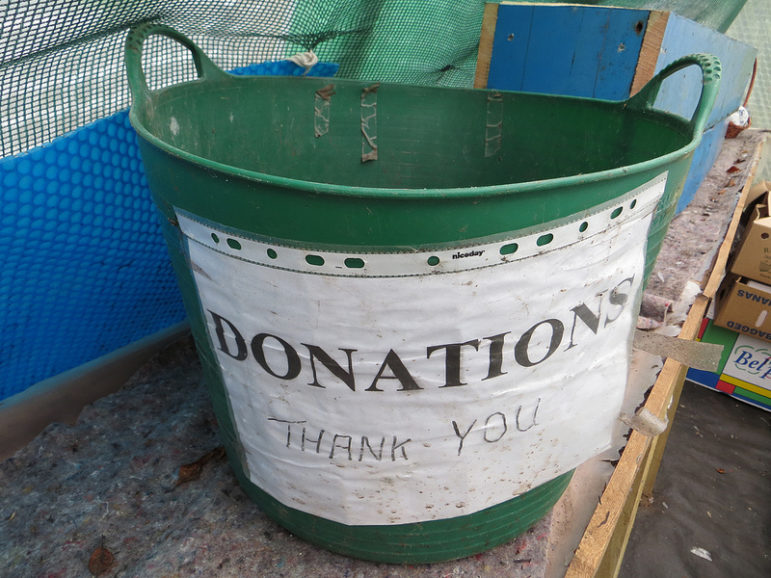
Each year, Giving USA, the annual report on philanthropy researched and written by the Indiana University Lilly Family School of Philanthropy and published by the Giving Institute, reports in depth on the latest trends in giving. We have covered some small portion of those findings below, but we encourage readers to attend our webinar on Thursday, June 16th to learn even more about the trends that were identified and to interact with some of those involved in the research.
Giving USA 2016’s eye-catching headline touts 2015 as “America’s most generous year ever.” A record amount of $373.25 billion was raised, reflecting annual growth of around four percent. Additionally, no subsector of nonprofits appears to be falling behind in receipt of these gifts except foundations, a category that is essentially volatile. But here’s the thing about tracking fundraising in an economy where ever-more-marked structural inequality exists: the numbers of that overall philanthropic recovery can be just as skewed as in the whole economy.
As with the overall economy, a recovery is in progress. Gifts to nonprofits working on international affairs have spiked upward, but that may simply be a relatively late recovery to losses felt during the Great Recession. Other subsectors are seeing more modest growth rates, which may reflect a bit more faith in personal budgets. Even giving against GDP has recovered to 2.1 percent—just a tenth of a percentage point below the all-time high of 2.2 percent.
Once again, the cutoff on the category of “mega-gifts” has been increased—this year, to $300 million. Last year, it rose from $80 million to $200 million. This means that nothing under $300 million qualifies as an oddball “mega-gift” in their econometric model, although we are almost certain that it would qualify as such to you.
And, as always, most of the mega-gifts largely went to the usual suspects—universities and foundations—with just a bit of a wrinkle: Because the art market is so hot right now and good valuations were available, we saw a lot of massive art donations to museums and universities. Thus, for instance, Stanford received an art collection worth $622 million from family members of philanthropist Harry W. Anderson. Likewise, Princeton University was gifted with 2,500 rare books and manuscripts valued at $300 million. The Art Institute of Chicago received a collection worth $400 million from Stefan Edlis and Gael Neeson, in what the museum says is the largest gift of art in its history.
It doesn’t matter what those donors bought their pieces for; they could get a tax break of up to 30 percent as assessed in this high market. If that amount exceeded what one is allowed to deduct in a single year, they’d spread it over multiple years. Here is how the Wall Street Journal described the art donation calculation:
Peter Jason Riley, a certified public accountant in Newburyport, Mass., ran the numbers for a hypothetical U.S. taxpayer with an adjusted gross income of $500,000 who owns a painting appraised at $100,000 that she had purchased for $20,000.
Sign up for our free newsletters
Subscribe to NPQ's newsletters to have our top stories delivered directly to your inbox.
By signing up, you agree to our privacy policy and terms of use, and to receive messages from NPQ and our partners.
What happens if she donates the painting? For donations of art, owners generally can claim a federal tax deduction of up to 30 percent of their adjusted gross income each year, making the limit in this case $150,000. So donating the painting to a qualifying museum would permit this owner a deduction in the current tax year of $100,000, assuming she hasn’t made other art donations totaling more than $50,000. (If donations in a given year exceed the limit for deductions, the overage can be deducted in following years, up to five if necessary, with the 30 percent limit applying each year.)
That means the tax benefit this year for the donor in this case would be $41,118, according to Mr. Riley.
If the painting was sold for the appraised value of $100,000, assuming a typical 15 percent sales commission to an auction house or art gallery, the seller would owe $31,372 in capital-gains tax, resulting in a net profit of $53,628, Mr. Riley says.
But, as the article notes, there are no guarantees the piece will sell at the appraised figure. The New Yorker just ran an article likening the art world to the tech market in the creation of weirdly anchored valuations and “unicorns.” So, with all of the celebration of increased giving, we may wish to remember that these kinds of dynamics of a wildly unbalanced financial system are occurring below the surface.
One last thing worth noting is that the artist who actually creates a piece of work and donates it to an auction or a museum gets absolutely no deduction in return. This may remind you of the more general structure of our economy.
Giving USA 2016 details many other interesting aspects of the giving landscape that are, we are sure, far more relevant to your fundraising. What’s happening to corporate gifts? Will prospects for the arts continue to improve? You can purchase a copy of the report at Giving USA’s website.
To be walked through the whole of the findings in detail and to hear a discussion of their implications for nonprofits, you should join us on Thursday, June 16th at 2:00 for a webinar on the topic with Dr. Patrick Rooney and other panelists. Bring a friend and board members!











